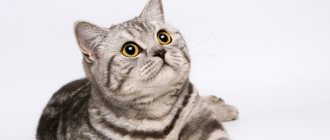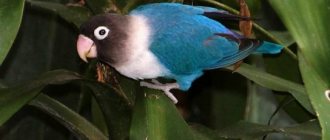- Wild animals
- >>
- Mammals
The Djungarian hamster is a small, very cute and active animal from the rodent family. They are very common as pets. Their popularity is explained by their simplicity and low maintenance requirements. However, before you bring such a small animal home, you need to ask how to properly create comfortable living conditions for it. In many literary sources, the dzhungarik is found under the name Sungur hamster.
Origin of the species and description
Photo: Djungarian hamster
Djungarian hamsters are chordates. They are classified into the class of mammals, the order of rodents, the family of hamsters, the genus of hairy-footed hamsters, and the species Djungarian hamster. The first scientific description of hamsters was compiled in 1839 by researcher Waterhouse. At that time, these representatives of the hamster family were present in single specimens only in the territory of modern Syria.
Almost a hundred years will pass until the first living hamster falls into the hands of scientists and researchers. The first person to catch the rodent was the scientist and researcher Aharoni from Jerusalem. He managed to find a female specimen in a deep hole along with 12 cubs.
Video: Djungarian hamster
After transporting the animals, only four were able to survive. Very soon, offspring appeared from these animals, which also began to multiply and produce offspring quite quickly. It was these individuals, discovered by the professor in a deep hole, that became the ancestors of all animals kept at home.
In 1938, the animals were brought from England to the United States. Here they were used as animals for laboratory research. Then they returned to Europe as laboratory animals. From this point on, the rapid and highly successful domestication of animals began. Within about a decade, hamsters have completely become pets in many countries around the world.
Care and maintenance
The downside to keeping Djungarian hamsters is that they live a short life - only 2-3 years. You need to make every effort and create comfortable conditions so that the animal lives longer.
Regular walks around the apartment
If you have enough time to monitor your hamster as he walks around the apartment, you can let him out.
But don't leave it unattended and remember:
- they climb up easily, but become very clumsy when going down and can fall;
- rodents love various crevices in which they can get stuck;
- various wires and sockets should be out of reach of hamsters;
- containers with water must be tightly closed or removed;
- cacti, geraniums and other dangerous or poisonous plants should also be hidden;
- you need to be careful with fabric products (carpets and upholstered furniture), because hamsters love to carry scraps of material into their nest;
- if there are cats or dogs in the house, they need to be locked somewhere for a while;
- Look carefully where you stand or sit so as not to crush your pet.
An alternative to simple walks around the apartment can be moving the hamster in a special ball. This is a transparent plastic sphere with an opening hole where the hamster can be placed - so he can travel around the cage and throughout the house. This movement is much more interesting than a running wheel. The animal is busy and will not do any harm.
Grooming
The Djungarian hamster is a very clean animal and takes care of its fur on its own, so it does not need water treatments. He “bathes” in a container of sand and licks the fur. Many owners never wash their pets, but if the rodent is very dirty, it can be washed under a gentle stream of warm water.
Immediately after this, it must be dried and warmed so that the animal does not catch a cold - a cold is almost always fatal for them. In addition, it is forbidden to wet your head while swimming. In general, bathe the animal only as a last resort; It’s better to just wipe the fur with a damp cloth.
Djungarians have short fur, so cutting and combing them is not necessary. Well, if such a desire appears, use a toothbrush or doll comb for combing. These procedures can psychologically traumatize the hamster, so think before you “care” for your pet in this way.
Hamsters can go into torpor (different from hibernation in time) for several hours. In this state, they tolerate low temperatures or lack of food. Take the animal in your arms and warm it up - and it will come to life.
Care for claws and teeth
The animals grind their claws down on special sticks on their own. Nails need to be trimmed only when they become very long. It is advisable to have this done by a veterinarian, but if you decide to do it yourself, you can purchase a nail clipper or use nail scissors.
This must be done very carefully so as not to catch the blood vessels and cut off only the keratinized transparent part of the claw. The presence of a mineral stone in the cage has already been mentioned - it is needed to grind down the teeth, because in hamsters they grow throughout their lives. You can also buy special sticks or toys for this purpose.
Cleaning the cage
Many people think that a rodent in an apartment means a constant unpleasant odor, but everything will depend on you. If you clean frequently and thoroughly, no unwanted odors will arise. Cleaning is carried out as needed, but at least once every 10 days.
The process itself consists of the following stages:
- Before doing the actual cleaning, you need to move the animal to another cage or jar.
- Pull out the tray, wash it in plenty of warm water, preferably without using chemicals.
- After this, change the bedding, but leave some so that the animal can smell its scent.
Appearance and features
Photo: What a Djungarian hamster looks like
Djungarian hamsters are very cute small animals that have a pointed muzzle and small, round ears. Sexual dimorphism is practically not expressed. One adult, regardless of gender, has a body length of 9-10 centimeters. The body weight of one adult individual is about 35-65 grams. The animal's muzzle is slightly elongated, pointed at the nose. Hamsters' eyes are round, black, and shiny. The nose area is framed by a rather long mustache.
Hamsters' fur is quite thick and can be colored in a variety of colors. The body of rodents is painted in two colors. The upper part of the body in the back area has a darker color. The paws and belly area are colored light, milky or beige. A characteristic feature is the presence of a dark stripe that runs along the line of the animal’s spine.
Possible color options for rodents:
- grey;
- brownish;
- gray with a lilac tint;
- ginger;
- cream.
Under natural conditions, hamsters shed twice a year. In winter, their coat is white with a silver tint, and in summer it turns gray for camouflage purposes. Hamsters have small, four-toed feet. They perform the function of hands. The fingers have long, sharp claws that help animals when digging holes. The animals' fingers are covered with thick fur. Djungarian hamsters have a thin, short tail.
Types of white hamsters
Djungarian and Syrian hamsters can be white. These two breeds are the most popular representatives of the species, and as soon as you look at the representatives of both breeds, you will immediately understand how the Syrian hamster differs from the Djungarian.
They can be distinguished by size - Syrian ones, unlike their Dzungarian counterparts, reach an average of about 13-15, and sometimes 20 cm in length. Females tend to be larger and more prone to bouts of bad mood.
There are hamsters with a bad character, but for the most part Syrians have a good disposition and are quite good at making contact with people . But do not forget that each animal is an individual in its own way, and it is worth observing at least a little of its behavior and the behavior of its fellows before choosing and purchasing. Also, some Syrian hamsters have longer, fluffier fur. The color is mostly red, but there are others.
The size of Djungarian hamsters does not depend on gender, nor does their character. All representatives of this breed are quite friendly and, despite the scent glands visible to the naked eye, they practically do not emit an unpleasant odor. Aggressive individuals are almost never found, which is why Djungarians are bought as pets for children . This type of hamster is the easiest to train to handle, and they even enjoy being gently petted. Their coat, unlike the Syrians, is smooth and of medium length.
REFERENCE! Djungarian hamsters live on average 2-2.5 years, while their Syrian counterparts live 2.5-3.5.
In nature there is only a standard one, the rest are artificially bred
Where does the Djungarian hamster live?
Photo: Djungarian hamster in Russia
The natural habitat of the dwarfs is quite wide. Djungarian hamsters are named after a province in the northwestern region of the People's Republic of China - Dzungaria.
Geographical regions of animal habitat:
- desert regions of Russia;
- Altai region;
- Kazakhstan;
- Mongolia;
- China;
- Korea.
The animals live in minks. The burrows are dug and arranged independently. Each burrow has from 3 to 6 entrances and exits. The structure of hamster burrows resembles real chambers, the depth of which is about one meter. The rodent has a pantry room where it prepares food supplies for the winter, a bedroom, and a latrine.
To keep an animal in artificial conditions, you will need a cage, which must be equipped with everything you need to keep a hamster comfortable. A wheel with a diameter of at least 16 centimeters must be placed in the cage. A wheel with a small diameter leads to spinal deformation. Another mandatory element is a house. It is better if it does not have large window openings to avoid an animal with cheeks full of food getting stuck in it.
It is necessary to put branches of fruit trees and shrubs in the cage, on which the hamster will sharpen his teeth. You need to designate a toilet for him in some corner. From time to time it is recommended to place a container in the cage into which sand can be poured for chinchillas. Djungarians will happily swim in the sand in this container. It is prohibited to place cotton wool, hay, or various scraps of fabric into the animals’ homes. Long fibers can crush the limb. In this case, it dies.
Health of albino hamsters
Regardless of the breed of white hamsters with red eyes, they are all predisposed to visual and skin diseases. Albinos suffer from cancer tumors more often than rodents with normal colors. Also, snow-white animals can form ulcers or papillomas on the skin.
Albino eyes are very sensitive, especially to sunlight. Therefore, a cage with small pets should be placed where there is no access to direct sunlight. These unusual animals should not be exposed to stress. Scientists have found that albinos are more susceptible to fear and stressful situations than their normal-colored counterparts.
It is quite difficult to give an exact answer to the question - how long do hamsters with a white fur coat and red eyes live? It is believed that the lifespan of these animals is about 2-3 years, provided that they are provided with proper care.
What does the Djungarian hamster eat?
Photo: White Djungarian hamster
Djungarians are undemanding when it comes to nutrition, so keeping and feeding them will not be too expensive. This type of pet can safely be called omnivores. The best option for these animals is ready-made balanced types of food specifically for hamsters. The basis of these feeds are granules and grains and cereals. Hamster formulas also include pieces of corn, as well as at least 10-15% proteins.
Be sure to give your hamsters fresh, juicy vegetables and fruits, which the animals love very much. However, it is necessary to promptly remove unused remains and cells in order to avoid rotting and disease of the animals, since animals often not only eat the food allocated to them, but also hide large quantities of them in their cheeks. This is how they stock up on provisions.
The owner must ensure constant access to water. To do this, you can install sippy cups. Another mandatory condition is the introduction into the diet of vitamins and minerals necessary for the normal functioning of hamsters. The animals also need to be fed with fresh herbs and juicy berries. Sometimes it is recommended to give them nuts and sunflower seeds. Hamster breeders should be careful about the source of protein in their hamsters' diet.
It is recommended to give them the following ingredients as protein food:
- boiled chicken liver in small quantities;
- boiled chicken breast;
- low-fat varieties of cottage cheese.
Your hamster should have fresh food every day. Changing the water in the sippy cup is also required daily. It is strictly forbidden to include foods that contain large amounts of sugar in your diet.
Diet
Pet stores offer a wide selection of ready-made mixtures that are intended for hamsters. The diet should not consist of mixtures alone. For variety, you can add a number of products:
- grain crops (wheat, corn, sunflower seeds, rye);
- from vegetables you can give carrots, pumpkin, cucumbers, zucchini;
- You shouldn’t get too carried away with fruits; sometimes you can offer your pet apples, bananas and apricots, but be sure to pit them;
- from meat you can only choose chicken and rabbit;
- boiled eggs (chicken, quail) can be included in the diet of Djungarians;
- cottage cheese should only be low-fat;
- from greens you can give plantain leaves and salad.
Each hamster requires the selection of an individual diet that will suit its preferences. The amount of food should be enough for a day. You should also always remember about the foods that should not be given to your pet:
- foods high in fat (butter, milk and cottage cheese with a high percentage of fat, veal, beef and pork);
- seasonings and spices, including onions and garlic;
- sweets and foods that can freeze in the animal’s cheeks;
- exotic fruits and citrus fruits;
- semi-finished products, including sausages;
- raw potatoes are also prohibited;
- watermelons and melons.
Features of character and lifestyle
Photo: Djungarian hamster
Djungarian hamsters tend to lead a solitary, solitary lifestyle. Under natural conditions, they live separately, in burrows that they dig and inhabit on their own. Rodents tend to be nocturnal. During the day they sleep almost all the time, hiding in their shelter. The shelter is left at nightfall. This way of life allows you to hide from a large number of enemies in natural habitats.
At night, hamsters are very mobile and active. In search of food in natural conditions they can travel quite long distances. A distinctive feature of these representatives of rodents is their thriftiness. Animals tend to collect food with their paws, like hands, and push it behind their cheeks. So they bring it home and put it in their storerooms.
Interesting fact: The size of the cheek space in which animals store their reserves can exceed the size of their heads by three times. It is noteworthy that before the onset of cold weather, hamsters can make an amount of reserves that exceeds their own body weight by almost a hundred times!
It is at night that animals are engaged in searching and collecting food and arranging their burrows. They also tend to frolic, just run and play. That is why, when arranging a cage for keeping at home, it is very important to install a wheel, swings, etc.
Typically, each individual has its own habitat region, and the territories of different individuals do not overlap. In a situation where this does happen, individuals reclaim their territory from each other. Often such wars lead to the death of the weaker animal.
Choosing and arranging a home
For a pet to feel comfortable, it needs its own home. But it is necessary to remember that hamsters are rodents, so the cage must be appropriate.
Size and material
Some owners keep their charges in aquariums, but this is harmful for the hamsters, since such housing has poor ventilation and an inappropriate microclimate. The best option would be a cage, and there are many of them on sale now.
Video: which cage to choose for a Djungarian hamster
When purchasing it, you need to pay attention to the following aspects:
- Hamsters in nature either sleep or move (they run dozens of kilometers during the night), so the size of their home is very important. The area per animal should not be less than 1500 cm², that is, the cage size should be no less than 30x50 cm. Living in a cramped cage and lacking movement, the animal will be unhappy and sick.
- To keep your hamster's teeth healthy, your hamster needs something to chew on, so the bars in the cage must be strong. It's best if they are made of stainless steel - then you don't need to paint the rods, and your pet won't eat the paint.
- Dzungariki are very nimble creatures that can penetrate small crevices. Pay attention to the dimensions between the bars to prevent your pet from escaping. If the hamsters are still small, then the gaps should not be more than 5 mm, for adults - a maximum of 15–20 mm.
- It is believed that cages with horizontal bars are better because the rodent has additional ladders.
What does a hamster need in a cage?
Buying a home is only half the battle; you need to equip it.
The dzhungarika cage should be equipped with the following items:
- A rest house where the rodent will not be disturbed during the daytime nap. It is better if it is made of environmentally friendly plastic rather than cardboard (impractical), wood or ceramics (expensive).
- Important elements are feeders and drinkers. The feeder should have dimensions of about 3x10 cm, and it is better if it is ceramic (heavy) so that the hamster does not turn it over. The animal rarely drinks water, but a drinking bowl is needed. An ordinary plastic one will quickly turn over, so the best option would be a “nipple” drinker attached to the wall.
- The hamster is a very active creature that loves to overcome obstacles. To do this, he will need a running wheel, various ladders and tunnels. The running wheel can have a mesh or solid surface, and a diameter of about 17 cm.
- To grind down teeth, the rodent must have a special stick or mineral stone in the cage. A branch of a fruit tree (except apricot and cherry) is also suitable for this purpose.
- A toilet for small rodents, which is filled with special fillers.
- You can put a bathing suit in the cage, filling it with sifted clean sand.
- Compressed sawdust or fine sand are used as bedding - these materials absorb moisture well and absorb odors. Cotton wool or wool should not be used. Hamsters use scraps of newspapers or napkins to build a nest.
Where to place the animal
When deciding where to place your hamster cage, you need to consider the following:
- it should not be in a draft or in the sun;
- heating devices will also negatively affect the pet;
- It is also better to place noisy objects (TV or computer) further away.
Social structure and reproduction
Photo: Djungarian hamster in nature
Djungarian hamsters are highly fertile. This is how nature intended it so that the animals would not hatch in their natural habitat. Hamsters reach sexual maturity at four weeks of age. If the animals are kept at home, they should be separated from each other as soon as they are one month old. Early pregnancy is very dangerous for the life and health of females.
The most optimal age for the first pregnancy is 3.5-4 months. After mating at home, individuals of different sexes are recommended to be separated so that they cannot harm each other. Pregnancy lasts on average 23-24 days. One female can give birth to from 1 to 10 cubs. Babies are born completely helpless and are in great need of maternal help and care. Sometimes it happens that the female abandons her offspring, or may even eat her cubs.
Interesting fact: A day after the birth of her offspring, the female is again ready to mate.
Hamsters get stronger and grow quite quickly. To get healthy offspring, it is recommended to choose healthy individuals with a known pedigree for mating. Only in this case is there a guarantee that the animal will not have any pathological diseases.
White dwarfs – video
Whatever color you choose for your future pet, it is important to remember that any hamster needs appropriate care. Whether it’s a white or brown hamster, everyone needs a spacious home, a house for daytime rest, timely change of bedding, and toys for exercise, because hamsters are prone to obesity. With proper care, the animal will be healthy and its fur will be clean. And keep in mind that the Djungarian hamster is a nocturnal animal. During the day he sleeps, and towards evening he begins an active lifestyle.
Natural enemies of Djungarian hamsters
Photo: What a Djungarian hamster looks like
In their natural habitat, hamsters have a huge number of enemies who constantly hunt them. The nocturnal lifestyle and deep burrows save rodents from some of them.
Natural enemies of hamsters:
- predatory bird species - stoats, owls, hawks, falcons;
- ferrets;
- wild dogs;
- foxes;
- wolves;
- lynx;
- wild cats;
- martens.
Nature has endowed these representatives of the rodent family with excellent hearing, which allows them to detect the slightest rustle at a considerable distance. This ability allows you to determine the approach of an enemy in many situations. If a hamster hears dangerous sounds, it instantly flees. They most often hide in deep holes or other reliable shelters. If the sounds that instill fear are very close and there is no way to escape, the animal simply freezes, wanting to remain unnoticed. If this maneuver does not bring the desired result, the hamster rushes to attack.
In some cases, even large predators are confused by this behavior, giving the small animal a chance to escape. There are a number of diseases to which hamsters are very sensitive. Among the most common diseases that cause death in animals are diabetes and obesity.
Tips for choosing
When buying, it is important to choose a pet that is good in all respects; for this you need to take advice from professionals:
- It is best to buy a pet between 5 and 6 weeks of age;
- the hamster should be moderately active;
- if the health of the rodent raises even the slightest doubt, then you should refuse the purchase;
- the coat should be free of bite marks and bald patches, and it should also be clean and dry;
- eyes and nose should have a healthy appearance, without discharge or suppuration;
- The fur near the anus should also be dry and clean.
See all about Djungarian hamsters in the video below.
What to feed at home
Djungarians are not picky about food, but to keep your pet healthy, you need to give it a varied diet. You should feed twice a day (morning and evening).
What is possible
The best option would be store-bought mixtures for hamsters, which contain the grain products they need.
But it is not advisable to feed mixtures alone, so you can include in your rodent’s diet:
- grains (wheat, rye, corn, sunflower seeds);
- vegetables (carrots, zucchini, pumpkin, cucumbers, etc.);
- fruits (apples, apricots (pitted), bananas);
- lean meat (chicken or rabbit);
- boiled eggs;
- skim cheese;
- nuts;
- greens (lettuce or plantain).
The diet is compiled individually, according to the preferences of the animal. Give your pet so much food that the next day there will be almost nothing left of the portion (make sure that he really ate everything and did not hide it in reserve).
Soon you will decide for yourself how much to give. The ratio of various components is also determined individually, taking into account the fact that it is useful to diversify food.
Approximate daily diet:
- fresh herbs – 300 g;
- vegetables – 50 g;
- cereals – 20 g;
- root vegetables – 15 g;
- bread – 15 g;
- hay – 10 g;
- milk – 10 ml.
Occasionally you can pamper your pet with strawberries or raspberries, but it is better not to overdo it with berries. In addition, we must take into account that although hamsters drink little, the presence of fresh water is necessary.
What not to do
Experts say that Djungarian hamsters are not susceptible to diabetes, like Campbell's hamsters, but it is better to limit their consumption of foods high in sugar.
If you take good care of your pet and monitor its diet, it will live longer than usual. There are cases of hamster longevity (about 4 years). We hope that the article will help you with this with its tips and recommendations. Good health to your pets and may they bring you joy for many years to come!
Sources:
https://vplate.ru/homyak/belyi-dzhungarskyi/ https://zoolog.guru/domashnie-zhivotnye/gryzuny/dzhungariki-opisanie-homyachkov-osobennosti-soderzhaniya-i-uhoda-foto.html https://pets2 .me/bok/1455-dzhungarskiy-belyy-homyachok.html











